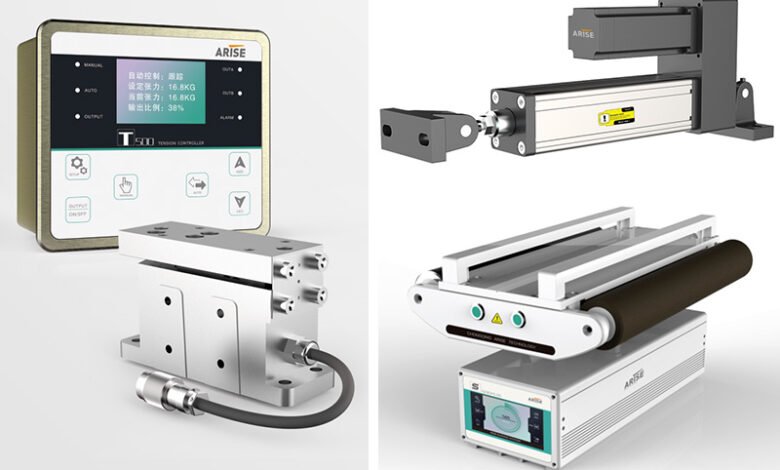Comprehensive Overview of web guide sensor and Their Impact on Production Efficiency

In the intricate world of industrial manufacturing, web guide sensor have become essential for optimizing the handling of web materials such as paper, film, and foil. These sensors ensure that materials are properly aligned throughout various stages of production, significantly impacting efficiency and quality. This article explores the detailed functionalities of web guide sensor, their diverse applications, and the advancements shaping their future.
What Are web guide sensor?
Web guide sensors are advanced devices designed to detect and correct the alignment of web materials during processing. They play a crucial role in maintaining the precise positioning of materials to ensure smooth and error-free production.
Core Functionality and Components
Web guide sensors typically consist of:
- Detection Units: Utilizes technologies like optical, ultrasonic, and laser systems to monitor the position of web materials.
- Processing Units: Convert detected data into actionable signals for adjustments.
- Adjustment Mechanisms: Implement changes to maintain correct alignment based on processed information.
These components work in harmony to provide real-time adjustments, crucial for maintaining production quality.
The Importance of web guide sensor in Modern Manufacturing
Web guide sensors are integral to various manufacturing processes for several reasons:
Enhancing Production Accuracy
Accurate material alignment is essential for high-quality production. web guide sensor continuously monitor and correct alignment to prevent defects and ensure that the final product meets quality standards.
Streamlining Manufacturing Processes
By automating alignment adjustments, web guide sensor reduce the need for manual intervention, thus streamlining manufacturing processes and enhancing overall efficiency.
Minimizing Waste and Reducing Costs
Proper alignment facilitated by web guide sensor helps reduce material waste caused by misalignment. This efficient use of resources contributes to cost savings and supports sustainable manufacturing practices.
Diverse Applications of web guide sensor
Web guide sensors are versatile tools applied across various industries:
Printing Sector
In the printing industry, web guide sensor ensure that substrates like paper or film are correctly aligned during the printing process. Accurate alignment is vital for achieving high-quality prints with precise image and text placement.
Packaging Industry
Web guide sensors help align packaging materials such as labels and films, ensuring that they are applied correctly. Proper alignment enhances the aesthetic and functional qualities of the packaging.
Textile Production
In textile manufacturing, web guide sensor are used to align fabrics during processes such as coating, dyeing, and finishing. Accurate alignment ensures that treatments are evenly applied, resulting in high-quality textiles.
Film and Foil Manufacturing
For film and foil production, web guide sensor monitor the alignment of materials during processing. Proper alignment is essential for producing films and foils that meet industry standards and performance specifications.
Benefits of Modern web guide sensor
Modern web guide sensor offer numerous advantages that enhance manufacturing efficiency:
Advanced Detection Technologies
State-of-the-art web guide sensor use advanced detection technologies, including laser and optical systems, to provide high precision in alignment measurement. These technologies ensure reliable and accurate sensor performance.
Real-Time Monitoring and Adjustment
Contemporary web guide sensor offer real-time monitoring and automatic adjustments to maintain optimal alignment. This capability reduces production errors and enhances operational efficiency.
Integration with Control Systems
Many modern web guide sensor are integrated with sophisticated control systems, enabling automated alignment adjustments based on real-time data. This integration minimizes manual intervention and improves production consistency.
Emerging Trends in Web Guide Sensor Technology
The technology behind web guide sensor is evolving rapidly. Key trends include:
Smart Sensor Integration
Future web guide sensor are expected to incorporate smart technologies such as artificial intelligence and machine learning. These innovations will enhance the sensors’ ability to predict and address alignment issues proactively.
Enhanced Connectivity
Advancements in connectivity will allow web guide sensor to interface more effectively with other production equipment and systems. Improved data sharing and integration will support more coordinated manufacturing processes.
Sustainable Design
As sustainability becomes increasingly important, future web guide sensor are likely to emphasize energy efficiency and environmentally friendly designs. Innovations in this area will contribute to more sustainable manufacturing practices.
Increased Adaptability
Next-generation web guide sensor will offer greater adaptability, allowing them to handle a broader range of materials and production conditions. This increased versatility will expand their applicability across various industries.
Conclusion
Web guide sensors are crucial elements in modern manufacturing, playing a vital role in ensuring the precise alignment of web materials throughout the production process. By utilizing advanced detection technologies and providing real-time feedback, these sensors help maintain high standards of product quality and operational efficiency.
Their applications across printing, packaging, textiles, and film production highlight their versatility and significance. As technology continues to advance, web guide sensor are set to evolve with smart capabilities, enhanced connectivity, and increased adaptability, further driving innovation in manufacturing.
In essence, web guide sensor are essential for optimizing production processes and ensuring the consistent quality of manufactured products. Their contribution to accurate alignment and efficient material handling underscores their importance in achieving manufacturing excellence.



